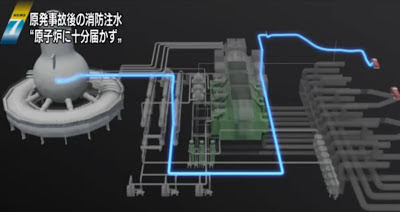(UPDATE) The vote is delayed till at least Monday March 18, as the government may not have enough votes to do the bidding of Euro overlords... The banks may remain closed on Tuesday.
=======================================================
It's an outright theft, but since it's official government entities doing this, it's not called theft but bailout. The Cypriot government even calls it "a new beginning". (1984, anyone?)
In exchange for the 10 billion euro bailout for the Cypriot banks and supposedly saving 8,000 jobs, the EU demanded that the Cypriot government confiscate 6.75 to 9.9% of deposits at the banks and exchange it with the bank "equity" (what kind of joke is this?), and that the interest on deposits be charged with 20 to 25% tax. These thefts are supposed to raise up to 7.5 billion euros.
They did it after the last financial markets in the world (US) closed for the weekend. People cannot withdraw money over the weekend, as ATMs have been stopped. (Zero Hedge has more information on the theft, including this post.)
According to reports, Germany and IMF initially wanted 40% of deposit money confiscated, not 9.9%.
I think it's a trial balloon to see if they can get away with the theft, and if they do then to replicate elsewhere in the EU periphery, for a start.
From ekathimerini.com (2/16/2013; emphasis is mine):
Shock in Cyprus as bailout brings bank account haircut
The Eurogroup reached on Friday night an unprecedented decision for bailing out Cyprus that dictates a haircut on all bank accounts on the island’s banks with immediate effect, while cash withdrawals are not allowed for the time being, generating unrest.
Along with loans adding up to 10 billion euros from the European Support Mechanism, Cyprus will have to find another 7-7.5 billion euros from privatizations and from a 6.75 percent one-off haircut on all bank accounts with a balance up to 100,000 euros, rising to 9.9 percent on accounts exceeding 100,000 euros.
Already bank customers are gathering outside major and cooperative banks, Skai television reported on Saturday morning, as angry depositors demand their money.
Depositors will get shares of the banks they are clients of in return for the capital lost, of the same value as the haircut their accounts have suffered.
This is estimated to fetch some 6 billion euros to the state, bridging most of the gap between the 10 billion euros the ESM is offering to Cyprus and Nicosia’s requirements of an estimated 17 billion.
This is the first time in the eurozone that a levy has been imposed not on the interest of bank accounts but on the capital itself. In addition to that there is a levy on interest, too, and an increase in the 10 percent corporate tax that has been one of the main driving forces behind Cyprus’s financial progress after the 1974 Turkish invasion, generating growth by attracting foreign direct investment.
Notably, the account haircut does not affect bank accounts in Cypriot bank branches based in Greece, according to sources from the Greek Finance Ministry.
Tax on interest will amount to between 20 and 25 percent.
Changes will have to be ratified by the House of Representatives, the republic’s parliament within the weekend, while an emergency cabinet meeting is taking place on Saturday morning in Nicosia to assess the situation.
Finance Minister Michalis Sarris has postponed his official visit by two days and will now go to Moscow on Wednesday.
Cyprus state broadcaster CyBC reported on Saturday that German Finance Minister actually entered the Eurogroup meeting on Friday proposing a 40 percent haircut on Cypriot bank accounts. Sarris stated on Saturday that this had also been the proposal of the International Monetary Fund.
Sarris stated in Brussels that in view of the threat from the European Central Bank for banks in Cyprus to shut down and chaos to ensue, the increase in interest taxation and the haircut to bank accounts became necessary. “A disorderly default, that was a genuine possibility, has been averted,” he said.
“It allows our economy to proceed decisively to a new beginning.”
He also noted that after the dramatic meeting of the eurozone ministers a further slashing of salaries and pensions has been avoided and confidence in Cypriot economy is restored. He qualified the bailout funds loaned to Cyprus as sustainable and manageable and will not constitute an unbearable weight on the next generations. “It spreads the load on this and on the following generations,” he said.
IMF head Christine Lagarde said "the Fund has always said it would support a solution that is viable, and this agreement fulfills this condition, so my recommendation to our board will be for contributing in the funding of the package."
Opposition leader Antros Kyprianou, the General Secretary of leftist AKEL, accused the government of not consulting the other parties, saying that "the government bears full responsibility for developments in the economy as instead of choosing the road of consensus it has decided to go it alone."
Cyprus's parliament is set to vote on the measure on Sunday. The "threat" is the same old, same old, which was used by Ben Bernanke and Hank Paulson when they demanded $700 billion to save the US banks in fall 2008 (at that time, extraordinarily big amount of money): "It would be chaos and catastrophe otherwise."
The governments world over say the same thing, with slight variations. In case of the Japanese one, the line was "We didn't tell you about core melt, or extent of damage at Fukushima I Nuke Plant because if we had done so it would have been chaos and panic...blah blah blah..."
The banks in Cyprus won't open until Tuesday.




















 Tokyo Time
Tokyo Time
![[Most Recent Quotes from www.kitco.com]](http://www.kitconet.com/charts/metals/gold/t24_au_en_usoz_2.gif)

